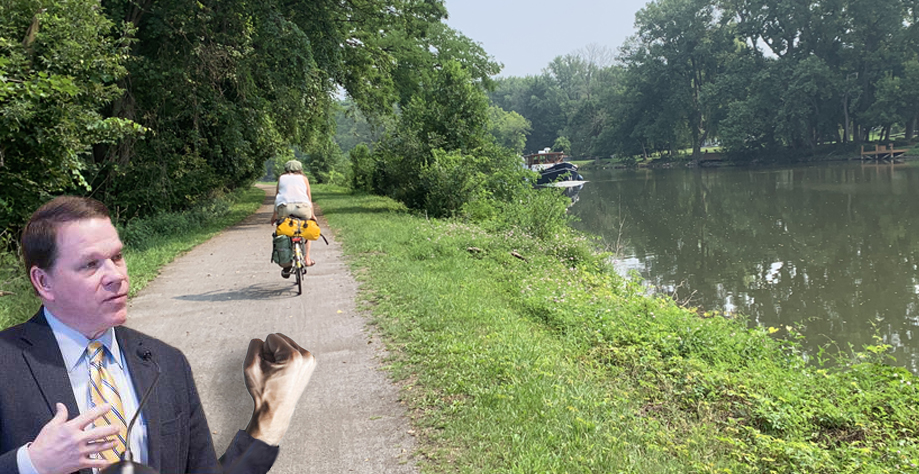
Kokomo, Indiana, has put resources and energy into developing streetscape features to calm traffic and provide more space for walking and biking, Aaron Renn reports. Photo: Urbanophile
With a population of about 60,000 and a formerly industrial economy, Kokomo, Indiana, is not the type of city that recent economic trends have favored.
But Aaron Renn at the Urbanophile says the city has embraced some tenets of urbanism as an economic and quality-of-life strategy, thanks in large part to the leadership of Mayor Greg Goodnight. When Renn visited recently, he was impressed with the new downtown bike trail and pedestrian infrastructure. And thanks to careful budgeting and prioritization, the city is making these improvements without taking on any debt. Renn says:
They’ve deconverted every one way street downtown back to two way, removed every stop light and parking meter in the core of downtown, are building a mixed-use downtown parking garage with a new YMCA across the street, have a pretty extensive program of pedestrian friendly street treatments like bumpouts, as well as landscaping and beautification, a new baseball stadium under construction, a few apartment developments in the works, and even a more urban feel to its public housing.
I think they’ve done a number of good things, and I especially appreciate the attention to detail that went into them. You clearly get the feel of them walking downtown streets. I would say the commercial and residential development lags the infrastructure, however. That’s to be expected. They do have an Irish Pub, a coffee shop, a few restaurants, and other assorted downtown type of businesses. This will be an area to watch as some of these investments mature.
When you look at the downward trajectory of most small Indiana industrial cities, the status quo is not a viable option. Kokomo deserves a lot credit for trying something different. And regardless of any development payoffs, things like trails and safer and more welcoming streets are already paying a quality of life dividend to the people who live there right now. It’s an improvement anyone can experience today just by walking around.
It’s hard to tell from Renn’s post if the city’s parking policies are aligned with the improvements to street designs, but it looks like an admirable effort. You can get a better sense of what’s happening (and of Mayor Goodnight’s urbanist library) by checking out the many pictures on the Urbanophile.
Elsewhere on the Network today: The Bike League shares a post from a woman whose life was transformed by her introduction to bicycling and the dramatic weight loss she achieved. And Pedestrian Observations says hoping people will just move out of productive cities with high housing costs isn’t a reasonable affordability strategy.





